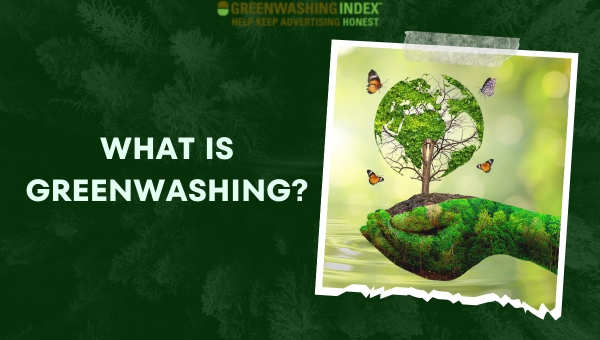Is your garden struggling with waterlogged patches that ruin your plants’ vitality? Don’t let poor drainage dampen your gardening dreams! In this article, we’ll unveil 15 creative and effective ways to enhance your garden drainage, ensuring your plants thrive in a well-drained environment.
From simple DIY solutions to innovative landscaping techniques, these tips are designed to help your garden flourish, even after heavy rains. Get ready to transform your outdoor space into a lush, vibrant paradise!
1. Create a French Drain
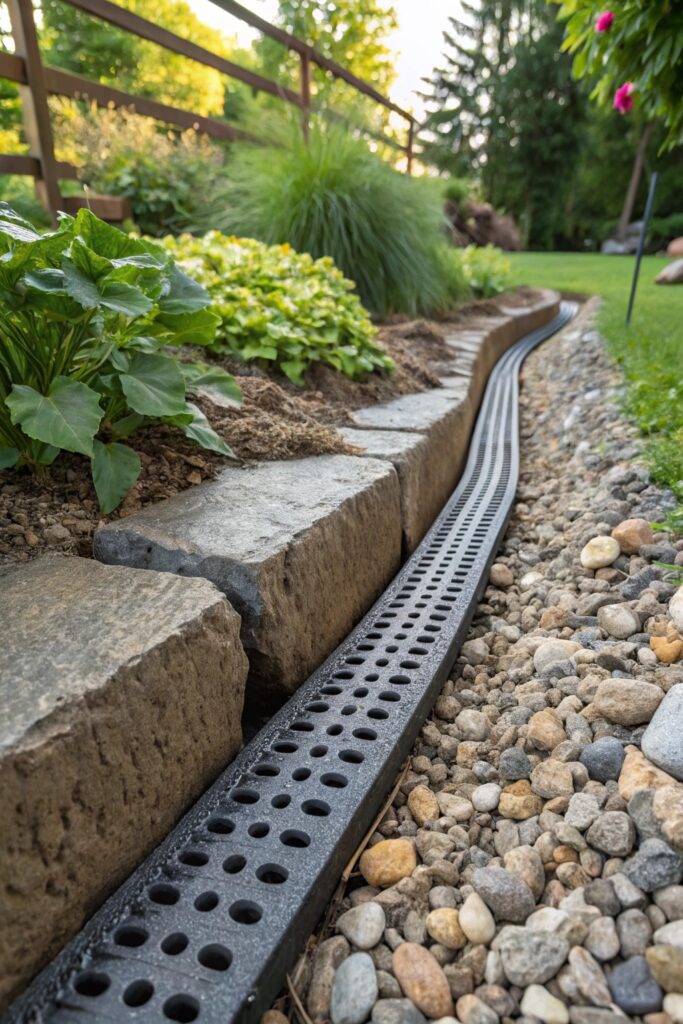
A French drain is a simple yet highly effective solution to redirect excess water away from your garden. This system involves digging a trench filled with gravel and a perforated pipe at the bottom to collect water and lead it away from the garden.
The gravel allows water to flow freely while filtering out debris. This method not only improves drainage but also prevents erosion, making it a must-have for any garden facing drainage issues. Implementing a French drain can drastically reduce standing water and promote better soil health, leading to more vigorous plant growth.
2. Install Drainage Tiles
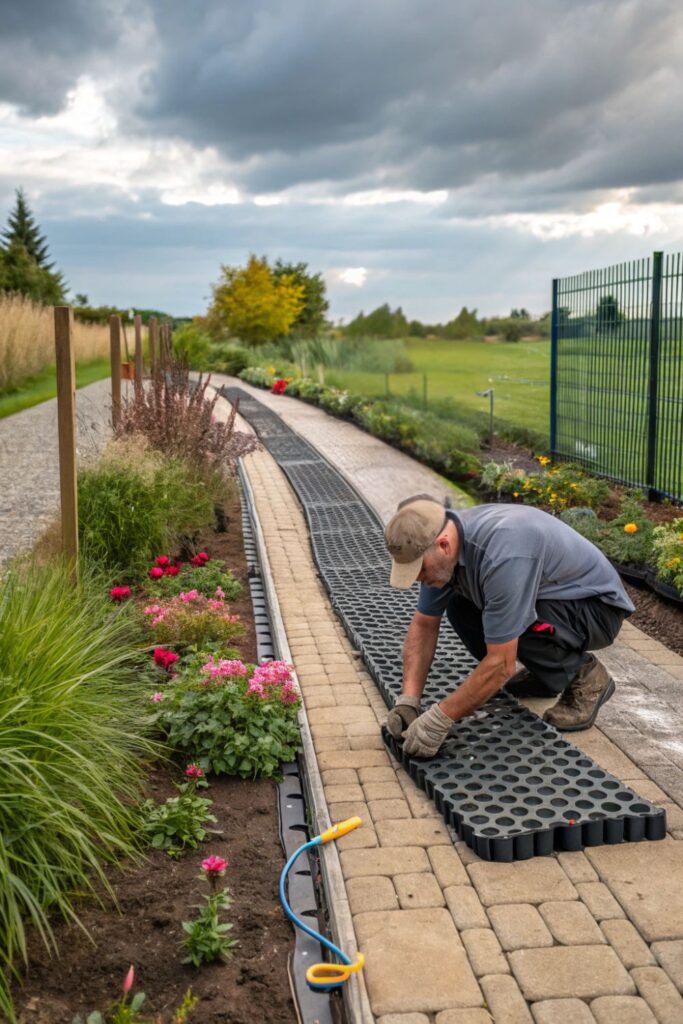
Drainage tiles are a fantastic method for controlling water flow in your garden. These are perforated pipes laid underground to collect and redirect water away from areas prone to flooding.
They work in harmony with the soil, allowing moisture to drain while keeping the roots of your plants healthy. This underground system can be particularly effective in larger gardens, ensuring that even after heavy rains, your garden remains vibrant and lush. Once installed, drainage tiles are low-maintenance and provide long-term benefits by improving soil conditions.
3. Build a Rain Garden
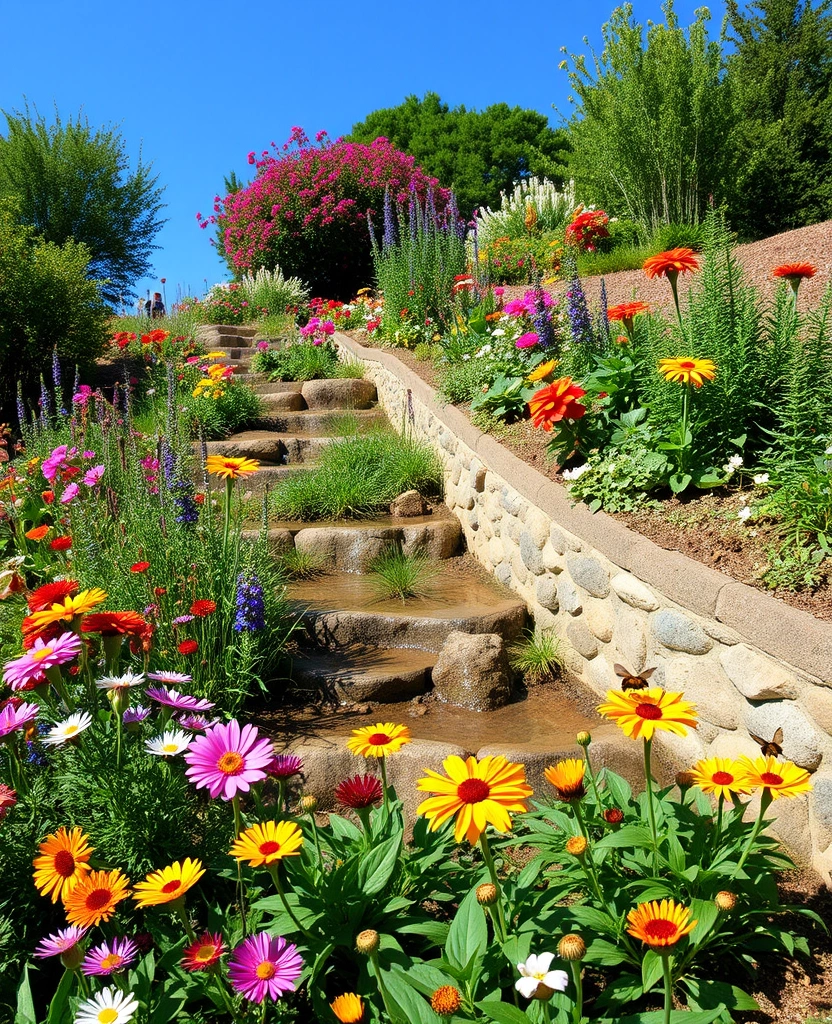
Rain gardens are not only beautiful but also an eco-friendly solution to manage excess water. These gardens are designed to capture rainwater runoff from impervious surfaces like roofs and driveways, allowing it to soak into the ground.
By incorporating native plants that thrive in wet conditions, you create a natural habitat while improving drainage. Rain gardens enhance biodiversity by attracting pollinators and birds, making them a joy to have in any landscape. Plus, they add aesthetic value with their vibrant colors and textures.
4. Use Permeable Paving
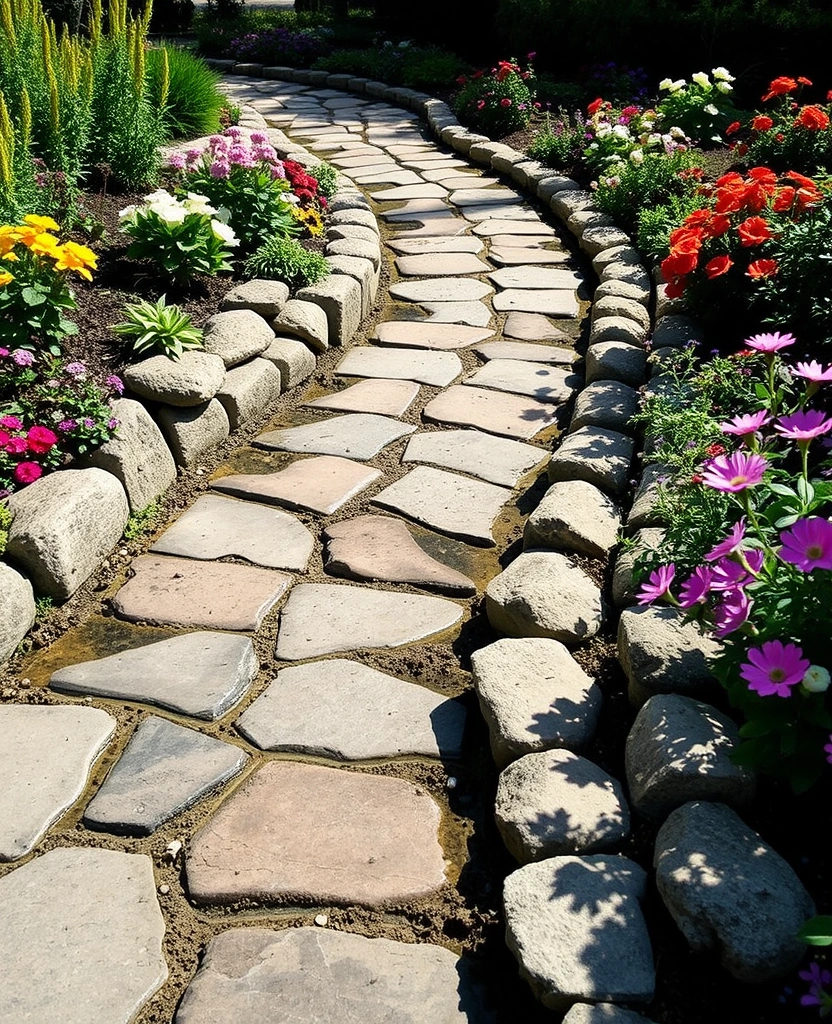
Permeable paving is an innovative way to improve garden drainage while creating beautiful pathways. Unlike traditional concrete, permeable pavers allow water to seep through the surface, reducing runoff and allowing groundwater recharge.
These pavers come in various styles and colors, so you can customize your garden pathways to suit your aesthetic preferences. By incorporating permeable paving, you can enjoy a stylish garden while promoting effective drainage solutions. Additionally, this method helps prevent water from pooling, which can lead to erosion and other issues.
5. Optimize Soil Composition
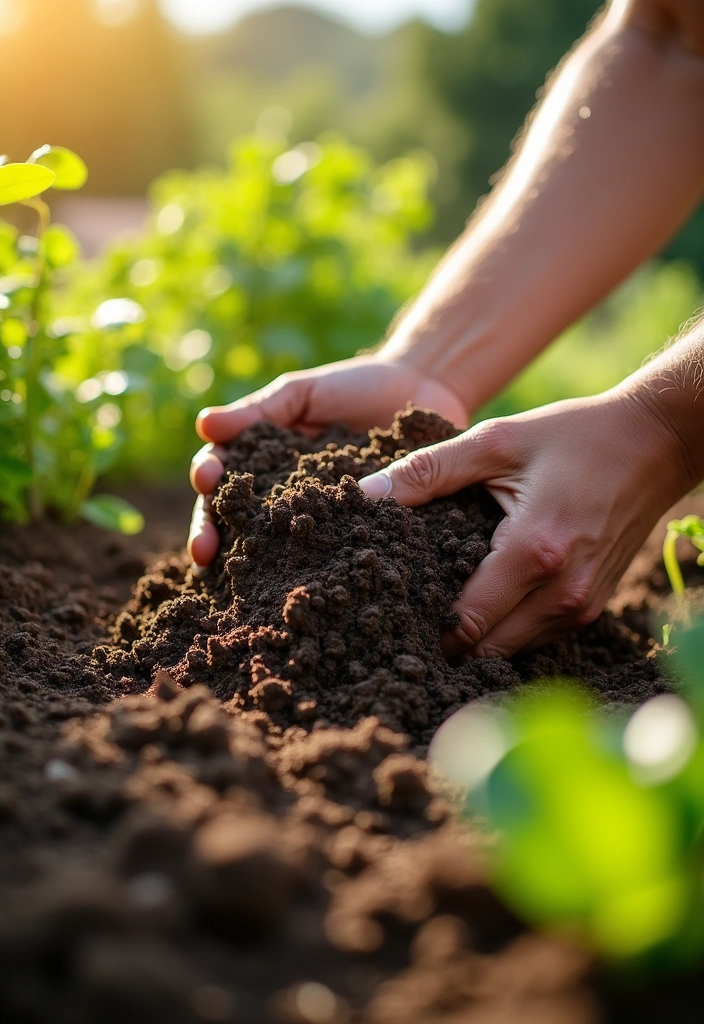
The composition of your soil plays a crucial role in drainage. To improve drainage, consider amending your soil with organic matter such as compost or peat moss. This helps to create a looser structure, allowing water to flow more freely.
Well-draining soil promotes healthy root systems and reduces the risk of waterlogging, which can harm your plants. Regular soil testing can guide you in making the right amendments for optimal drainage. By focusing on your soil composition, you can create an environment where plants thrive.
6. Create Swales
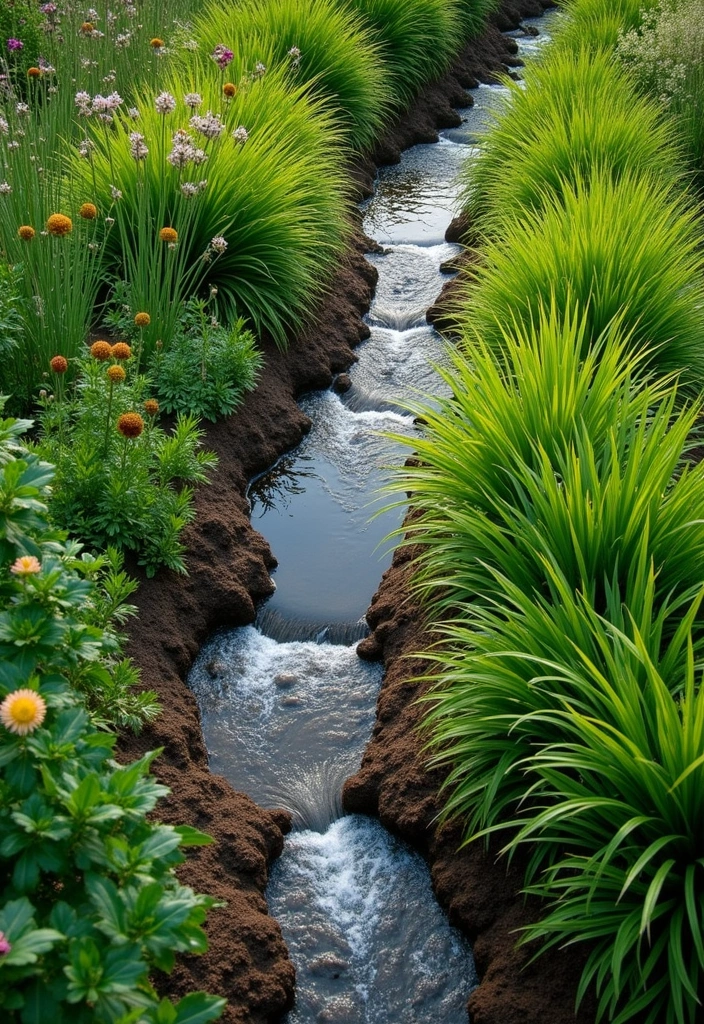
Swales are shallow, vegetated channels designed to manage water runoff efficiently. By strategically placing swales in your garden, you can direct excess water away from sensitive areas while promoting infiltration.
These channels can be landscaped with native grasses and flowers, enhancing both aesthetics and functionality. Swales not only improve drainage but also reduce erosion and filter pollutants from runoff. Incorporating swales into your garden design can effectively address drainage issues while creating a natural, beautiful landscape.
7. Install a Dry Well
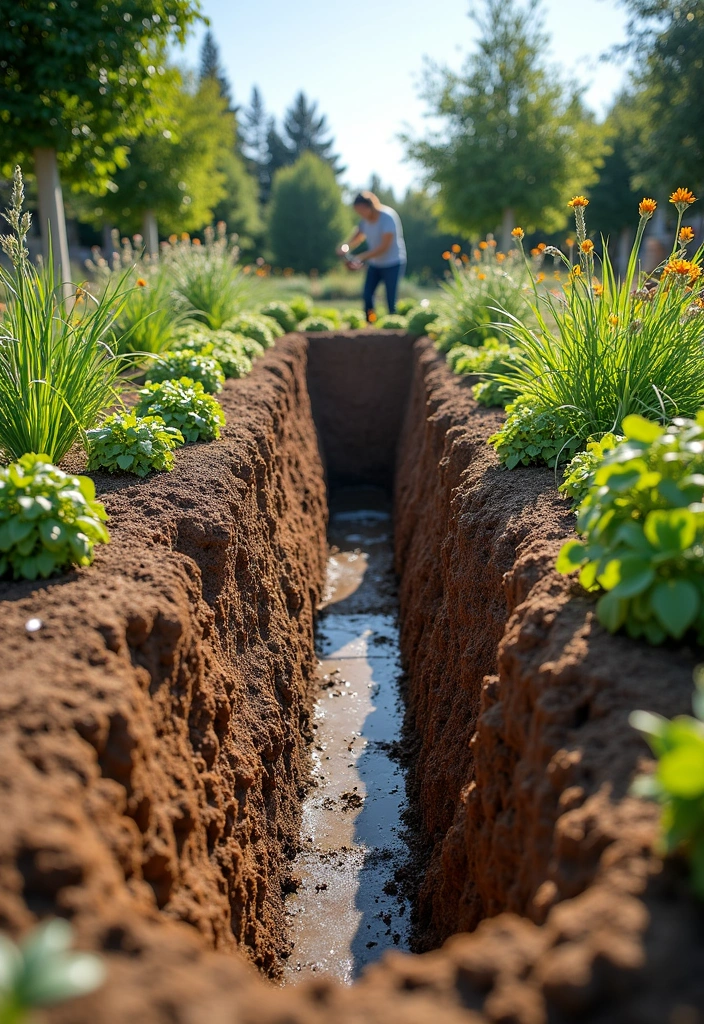
A dry well is a fantastic solution for redirecting water away from your garden by allowing it to gradually seep into the ground. This underground structure collects excess water and disperses it slowly, preventing flooding and waterlogging in your garden.
Installing a dry well requires some digging but offers long-term benefits for drainage issues, especially in areas with poor soil drainage. It’s a sustainable option that not only helps your garden but also conserves water. After installation, you can even plant grass or flowers over the dry well, blending it seamlessly into your landscape.
8. Use Raised Garden Beds
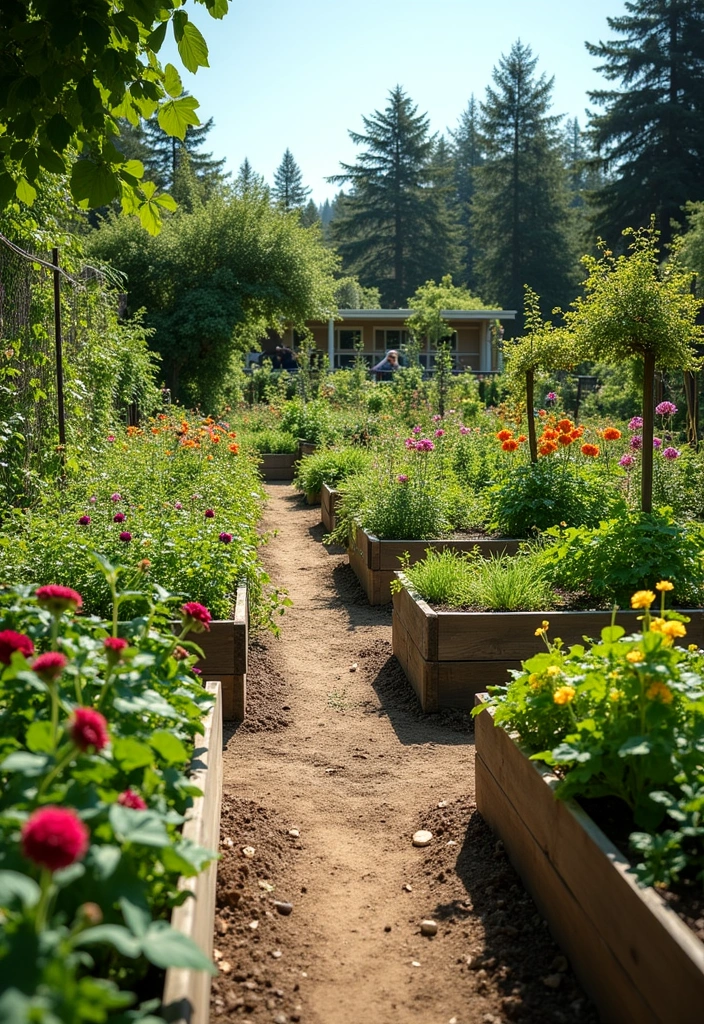
Raised garden beds are an excellent choice for improving drainage in your garden. By elevating your plants above ground level, you reduce the risk of water pooling around roots, allowing for better air circulation and drainage.
Raised beds can be constructed from various materials, including wood, stone, or recycled materials, giving you the flexibility to design them according to your garden style. Additionally, they warm up faster in spring, promoting earlier plant growth. Creating raised beds can transform your gardening experience, making it more enjoyable and productive.
9. Implement a Rain Barrel System
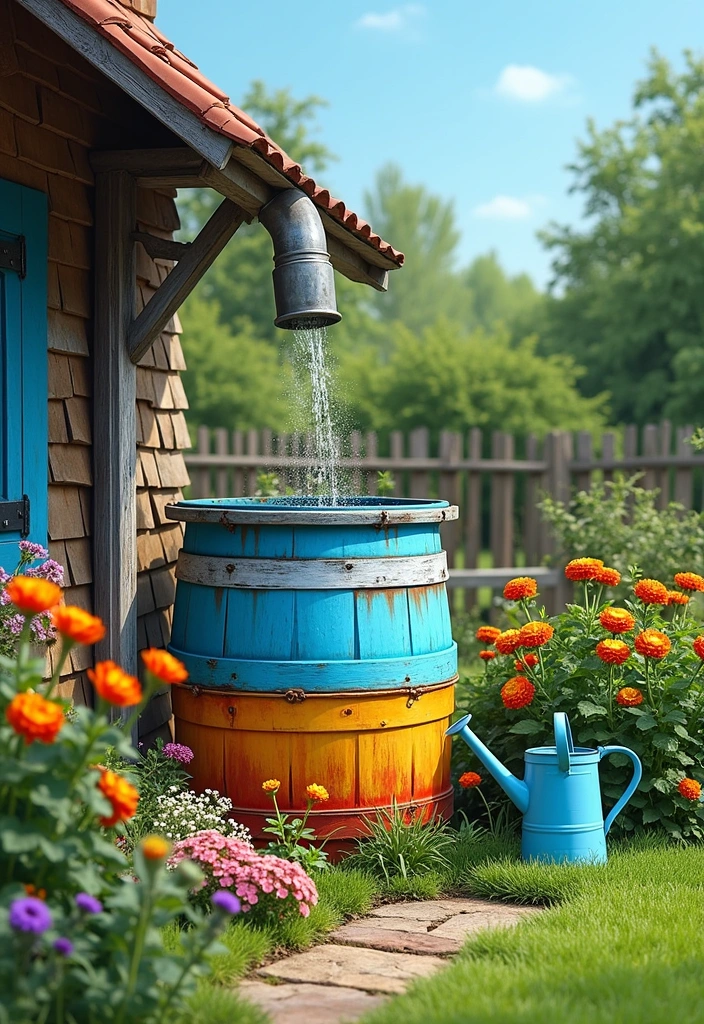
Rain barrels are a sustainable way to manage excess water while conserving resources. By collecting rainwater from your roof, you can use it to water your garden during dry spells, reducing the need for municipal water.
Installing a rain barrel not only helps with drainage by redirecting water but also promotes eco-friendly gardening practices. You can easily set up a rain barrel beneath your downspout, and many models come with a spigot for easy access. Embracing rainwater harvesting is an effective way to enhance your garden’s resilience.
10. Plant Water-Loving Plants
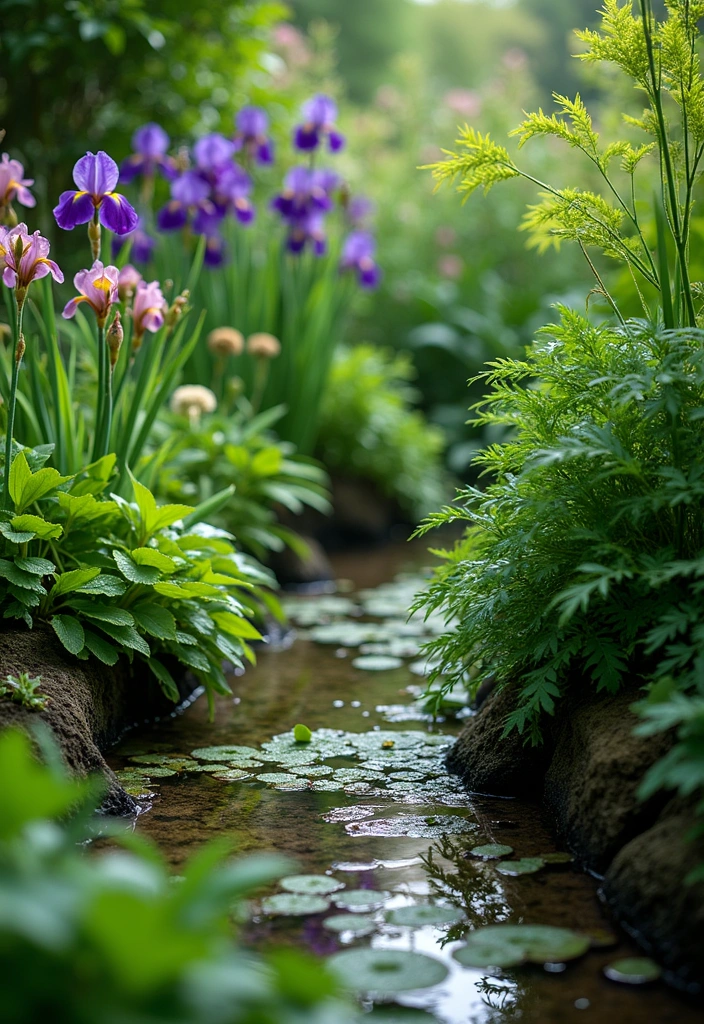
If your garden tends to hold too much water, consider planting water-loving plants that thrive in moist conditions. These plants can absorb excess moisture, helping to alleviate drainage problems while adding beauty to your landscape.
Some popular choices include ferns, irises, and certain types of grasses. By strategically placing these plants in areas prone to water accumulation, you can create a balanced ecosystem in your garden. Not only do these plants serve a functional purpose, but they also enhance the overall aesthetic of your garden.
11. Use Gravel or Decorative Stone
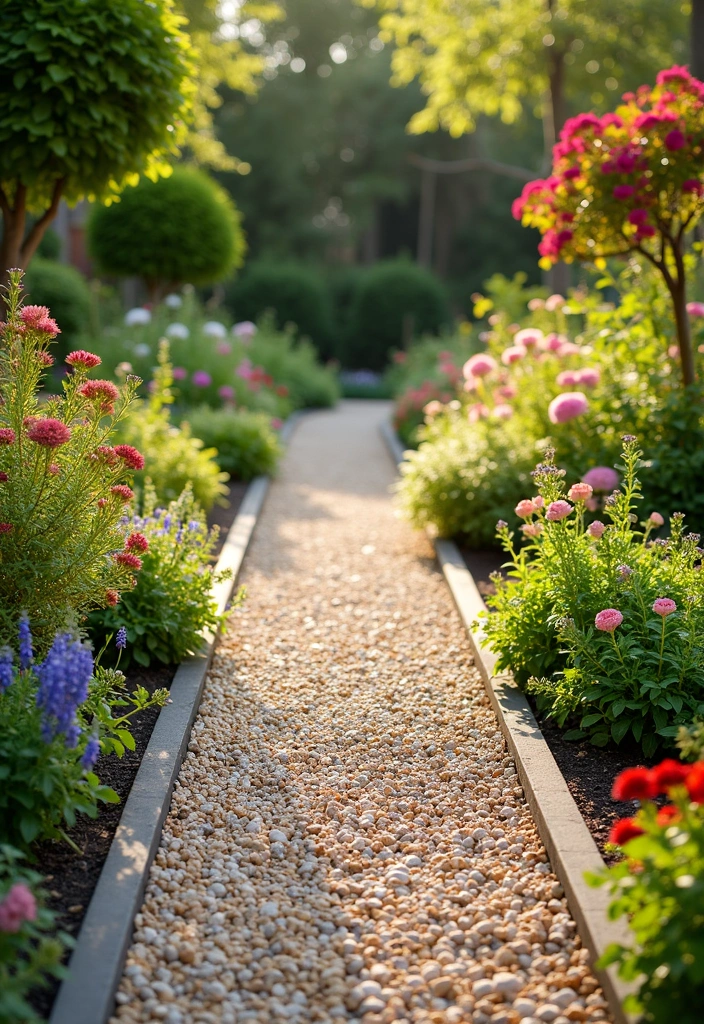
Incorporating gravel or decorative stone in your garden design can significantly improve drainage. These materials allow water to flow freely while providing a stylish look.
You can create pathways, patios, or even decorative plant beds filled with gravel to enhance drainage and add visual interest. This solution is particularly effective in areas where grass struggles to grow due to water accumulation. Additionally, gravel helps to prevent soil erosion while requiring minimal maintenance.
12. Regularly Maintain Your Drainage Systems
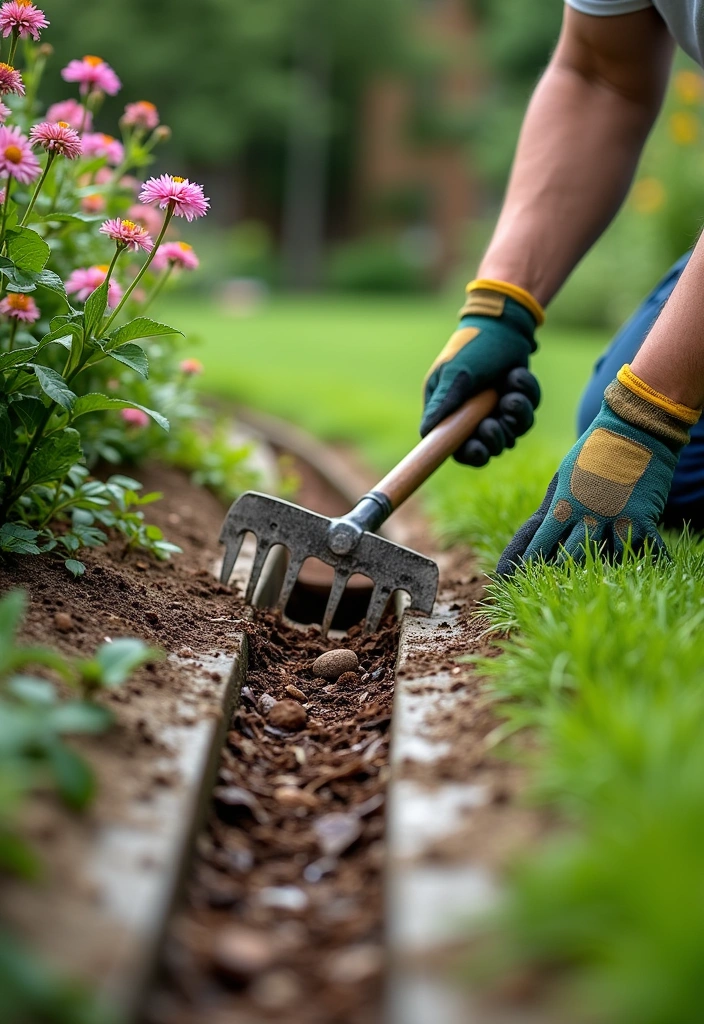
Regular maintenance of your existing drainage systems is crucial to ensure they function effectively. Clearing debris, leaves, and sediment from gutters, drains, and downspouts prevents blockages that can lead to water pooling.
Schedule routine checks to assess the condition of your drainage solutions and make necessary repairs. This proactive approach can save you from larger issues down the line, keeping your garden healthy and thriving. Investing time in maintenance now will pay off with a flourishing garden.
13. Avoid Compacted Soil
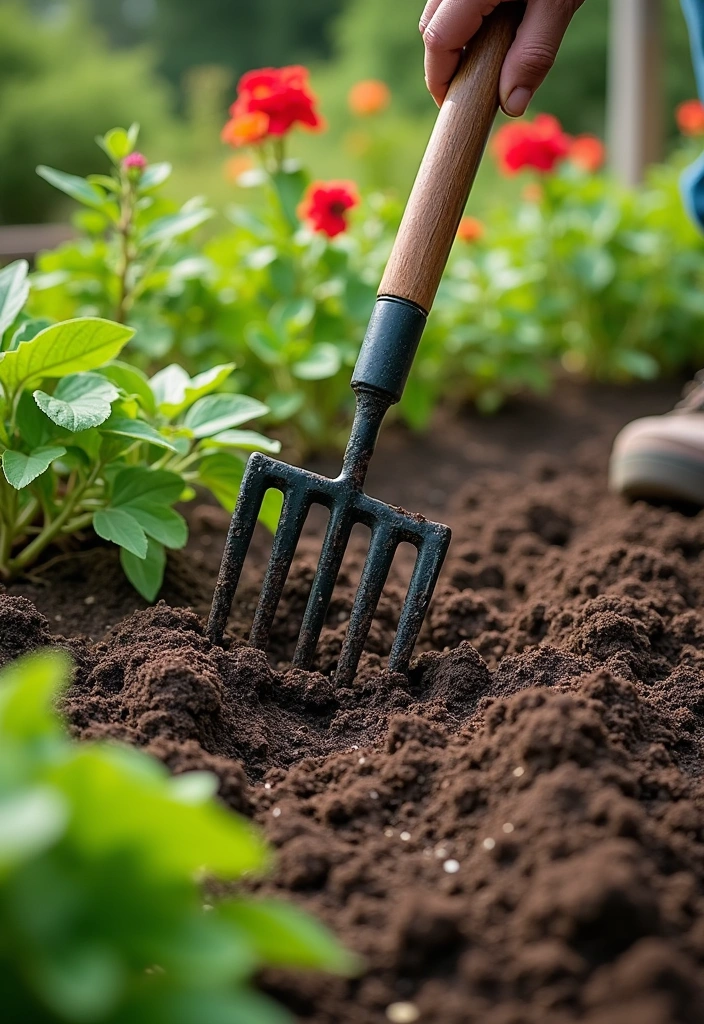
Compacted soil can severely hinder drainage, trapping water and suffocating plant roots. To improve drainage, regularly aerate your soil using a garden fork or an aerator.
This process loosens the soil, allowing water to penetrate more deeply and encouraging healthy root growth. Aeration also improves nutrient absorption, promoting overall plant health. It’s important to avoid walking on wet soil to prevent compaction, so consider creating designated pathways in your garden. By focusing on soil health, you can create a thriving garden.
14. Consider a Bioretention Area
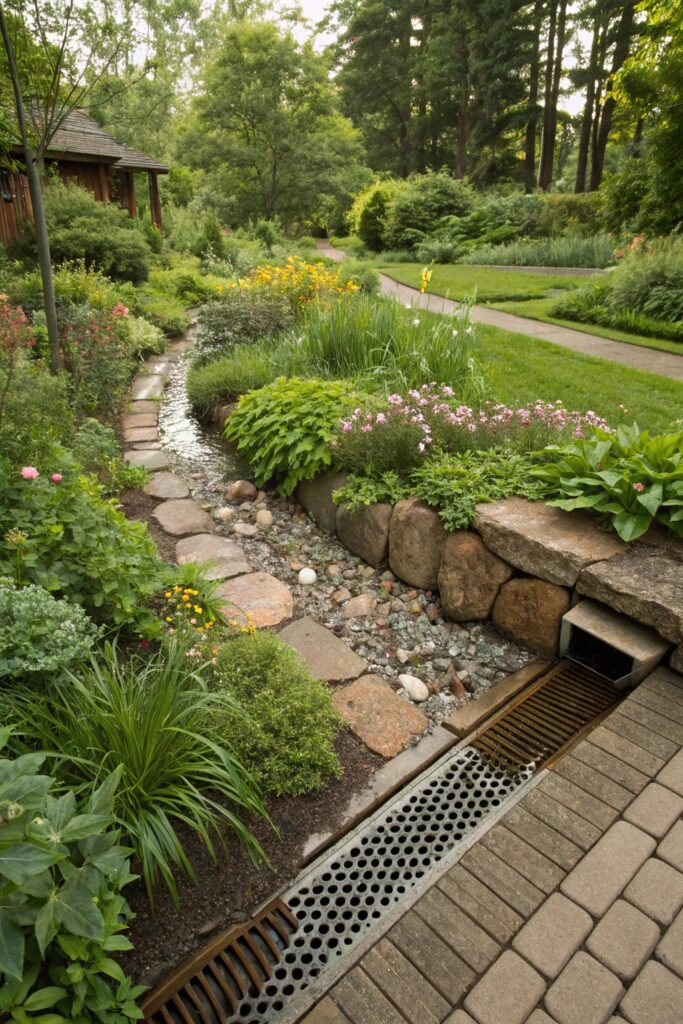
Bioretention areas are specially designed landscapes that manage stormwater runoff effectively. These areas typically feature native plants, mulch, and soil designed to absorb and filter water, reducing erosion and improving drainage.
By incorporating a bioretention area in your garden, you can create a beautiful, functional space that enhances biodiversity. This solution not only addresses drainage issues but also supports local wildlife, providing a habitat for birds and beneficial insects. It’s an investment in both your garden and the environment.
15. Plan Your Garden Layout Wisely
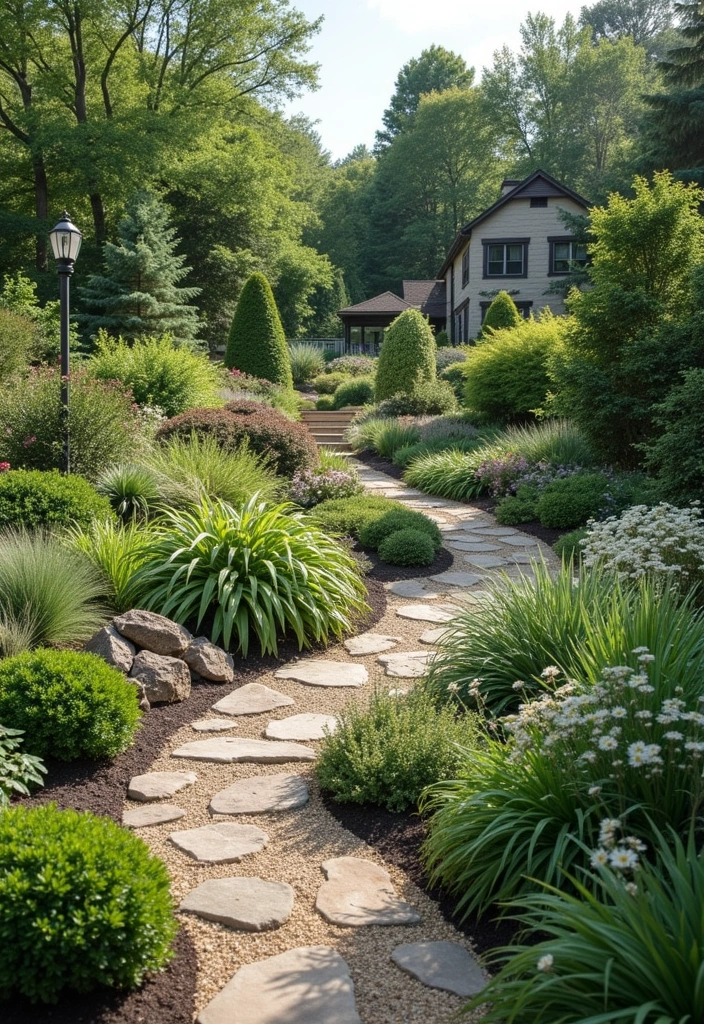
The layout of your garden can greatly impact drainage, so thoughtful planning is key. Positioning plants according to their water needs can minimize drainage problems.
For example, place water-loving plants in lower areas and drought-tolerant species on elevated ground. Incorporate slopes and contours in your garden design to encourage water to flow away from plants and structures. By designing your garden layout with drainage in mind, you can create a functional space that thrives in all weather conditions. This strategic approach to gardening will pay off with healthier, more resilient plants.
Conclusion
Improving garden drainage is essential for nurturing a thriving outdoor space. With these 15 effective solutions, you can combat waterlogging and create a garden that flourishes in every season. From implementing simple systems to thoughtful landscaping, each tip can make a significant difference in your gardening success. Don’t hesitate to start making changes today and watch your garden thrive!


